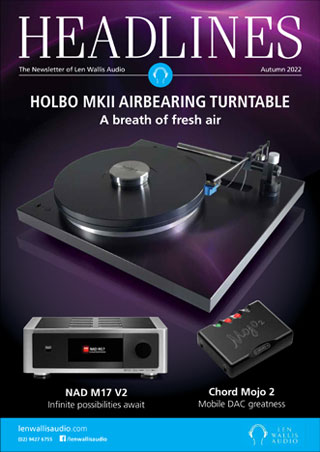From the desk of Len Wallis
While Wi-Fi is generally taken for granted these days, it is still a relatively new phenomenon. The first wireless products – then called WaveLAN – were introduced by NCR Corporation in 1991 as a means to have their cash register systems communicate wirelessly to each other. The following year scientists working for the CSIRO patented an advanced version of the technology, and 802.11 was released in 1997. Apple was the first company to introduce Wi-Fi (as an option) in their laptops in 1999.
It was still some time before Wi-Fi became popular, with the common application for many years being accessing Internet via laptops etc.
However the last few years has seen an explosion in the use of devices that utilise Wi-Fi, and more importantly, the home network. As recently as 10 years ago most homes would have one or two laptops, possibly a PC, and a printer. Today it is not unusual for a home to have 50 or more smart components that each have their own unique IP addresses. The demands of a current domestic installation far outstrip the abilities of a home network designed ten or even five years ago. We have quickly grown from the scenario above to having multiple members of the household simultaneously streaming video and/or audio, gaming on-line, monitoring security, accessing smart devices (which are increasingly being used as system controllers), controlling automation, communicating on-line (VoIP etc.), cloud storage etc., etc.
Almost all devices we sell and install these days, even through our retail division, will connect to the network. Most systems access music or video online. Almost all are subject to regular software upgrades, via the web. Most programmable remotes are smart device (iPad etc.) based products, and almost all multi-room audio streaming systems are network based. Once you throw in any form of automation the dependency on the network grows exponentially. And the unfortunate reality is that if your network is not up to the task, these systems are simply not going to perform as they should.
Through necessity we have been designing and implementing networks for some years now. The difference is that the networks we design are Enterprise (commercial) Grade. The fact that your existing Wi-Fi system is coping with your current requirements does not mean it will cope with newer technologies. The stockstandard network components that you pick up from your local electronics store – or supplied by your ISP provider – simply will not cope with modern day demands.
While Len Wallis Audio is an entertainment-based company, and this will never change, you will find that one of the first questions we will now ask is ‘how stable is your network?’
It is now common practice for us to install the network prior to or alongside the installation of your audio or Audio Visual system. We are also aware that these demands are becoming greater day by day, so it is important that any-thing we install now will cope with future requirements as well.




